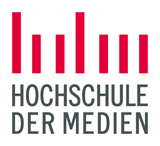Library Carpentry, Frankfurt a.M.
November 18-19, 2019
10:00 am - 6:00 pm, 9:00 am - 4:30 pm
Instructors: Agnes Brauer, Markus Hennies, Evamaria Krause, Christian Krippes, Till Sauerwein
Helpers: Stephan Lenartz, Jakob Frohmann
General Information
Library Carpentry is made by librarians, for librarians to help you:
- automate repetitive, boring, error-prone tasks
- create, maintain and analyse sustainable and reusable data
- work effectively with IT and systems colleagues
- better understand the use of software in research
- and much more...
Library Carpentry introduces you to the fundamentals of computing and provides you with a platform for further self-directed learning. For more information on what we teach and why, please see our paper "Library Carpentry: software skills training for library professionals".
Who: The course is for librarians and other information workers. You don't need to have any previous knowledge of the tools that will be presented at the workshop.
Where: Raum RUW 145, Bibliothek Recht und Wirtschaft, Theodor-W.-Adorno-Platz 4, 60323 Frankfurt am Main. Lageplan und Anfahrt: http://www.uni-frankfurt.de/38090278/Lagepl%C3%A4ne_und_Anfahrtsbeschreibungen. Get directions with OpenStreetMap or Google Maps.
When: November 18-19, 2019. Add to your Google Calendar.
Requirements: Participants must bring a laptop with a Mac, Linux, or Windows operating system (not a tablet, Chromebook, etc.) that they have administrative privileges on. They should have a few specific software packages installed (listed below). They are also required to abide by Library Carpentry's Code of Conduct.
Accessibility: We are committed to making this workshop accessible to everybody. The workshop organizers have checked that:
- The room is wheelchair / scooter accessible.
- Accessible restrooms are available.
Materials will be provided in advance of the workshop and large-print handouts are available if needed by notifying the organizers in advance. If we can help making learning easier for you (e.g. sign-language interpreters, lactation facilities) please get in touch (using contact details below) and we will attempt to provide them.
Further information: Participation fee: 60 EUR for members of VDB, BIB or similar, 120 EUR for others. Please transfer your participation fee to VDB Landesverband Hessen, Kreissparkasse Tübingen, IBAN: DE75 6415 0020 0002 9739 77, BIC: SOLADES1TUB. Catering is included during the workshop. For overnight accomodation (not included) please see www.frankfurt-tourismus.de.
Registration/Contact: Please register via email until 15.10.2019: lv.hessen@vdb-online.org. Maximum number of participants: 25.
Organization: We are happy to receive financial support for this workshop by The Association of German Librarians (VDB - Verein Deutscher Bibliothekarinnen und Bibliothekare). The workshop is jointly organized by VDB-Landesverband Hessen, Universitätsbibliothek Frankfurt, and instructors and helpers from Hochschule der Medien Stuttgart, Universitätsbibliothek Augsburg, Universitätsbibliothek Gießen, and ZB MED - Informationszentrum Lebenswissenschaften.
Schedule
Day 1, November 18, 2019
| 10:00 | Arrival & Coffee, Time for setup questions |
| 11:00 | Introduction to Data |
| 12:30 | Lunch break |
| 13:30 | Introduction to Data |
| 14:00 | The UNIX Shell |
| 15:30 | Coffee |
| 16:00 | The UNIX Shell |
| 17:30 | Wrap-up |
| 18:00 | END |
Day 2, November 19, 2019
| 09:00 | Introduction to Python |
| 10:30 | Coffee |
| 11:00 | Introduction to Python |
| 12:00 | Lunch break |
| 13:00 | OpenRefine |
| 14:30 | Coffee |
| 15:00 | OpenRefine |
| 16:00 | Wrap-up |
| 16:30 | END |
We will use this collaborative document for chatting, taking notes, and sharing URLs and bits of code.
Syllabus
Data Intro
- Intro to data
- Jargon busting
- Keyboard shortcuts
- Plain text formats
- Naming files
- Regular expressions
- Reference
Python
- Using libraries
- Working with arrays
- Reading and plotting data
- Creating and using functions
- Loops and conditionals
- Defensive programming
- Using Python from the command line
- Reference
The Unix Shell
- Files and directories
- History and tab completion
- Counting and sorting contents in files
- Pipes and redirection
- Mining or searching in files
- Reference
Open Refine
- Introduction to OpenRefine
- Importing data
- Basic functions
- Advanced Functions
- Reference
For more information, please have a look at librarycarpentry.org.
Setup
To participate in a Library Carpentry workshop, you will need access to the software described below. In addition, you will need an up-to-date web browser.
We maintain a list of common issues that occur during installation as a reference for instructors that may be useful on the Configuration Problems and Solutions wiki page.
The Bash Shell
Bash is a commonly-used shell that gives you the power to do simple tasks more quickly.
Windows
Video Tutorial- Download the Git for Windows installer.
- Run the installer and follow the steps bellow:
- Click on "Next".
- Click on "Next".
- Keep "Use Git from the Windows Command Prompt" selected and click on "Next". If you forgot to do this programs that you need for the workshop will not work properly. If this happens rerun the installer and select the appropriate option.
- Click on "Next".
- Keep "Checkout Windows-style, commit Unix-style line endings" selected and click on "Next".
- Keep "Use Windows' default console window" selected and click on "Next".
- Click on "Install".
- Click on "Finish".
-
If your "HOME" environment variable is not set (or you don't know what this is):
- Open command prompt (Open Start Menu then type
cmdand press [Enter]) -
Type the following line into the command prompt window exactly as shown:
setx HOME "%USERPROFILE%" - Press [Enter], you should see
SUCCESS: Specified value was saved. - Quit command prompt by typing
exitthen pressing [Enter]
- Open command prompt (Open Start Menu then type
This will provide you with both Git and Bash in the Git Bash program.
macOS
The default shell in all versions of macOS is Bash, so no
need to install anything. You access Bash from the Terminal
(found in
/Applications/Utilities).
See the Git installation video tutorial
for an example on how to open the Terminal.
You may want to keep
Terminal in your dock for this workshop.
Linux
The default shell is usually Bash, but if your
machine is set up differently you can run it by opening a
terminal and typing bash. There is no need to
install anything.
Text Editor
When you're writing code, it's nice to have a text editor that is
optimized for writing code, with features like automatic
color-coding of key words. The default text editor on macOS and
Linux is usually set to Vim, which is not famous for being
intuitive. If you accidentally find yourself stuck in it, try
typing the escape key, followed by :q! (colon, lower-case 'q',
exclamation mark), then hitting Return to return to the shell.
If you already have another text editor installed (e.g. Atom, Sublime, Notepad++, Text Wrangler, Gedit, or Kate) please stick to using it. If you haven't, we suggest you install Atom.
Python
Python is a popular language for research computing, and great for general-purpose programming as well. Installing all of its research packages individually can be a bit difficult, so we recommend Anaconda, an all-in-one installer.
Regardless of how you choose to install it, please make sure you install Python version 3.x (e.g., 3.6 is fine).
We will teach Python using the Jupyter notebook, a programming environment that runs in a web browser. For this to work you will need a reasonably up-to-date browser. The current versions of the Chrome, Safari and Firefox browsers are all supported (some older browsers, including Internet Explorer version 9 and below, are not).
Windows
Video Tutorial- Open https://www.anaconda.com/download/#windows with your web browser.
- Download the Python 3 installer for Windows.
- Install Python 3 using all of the defaults for installation except make sure to check Make Anaconda the default Python.
macOS
Video Tutorial- Open https://www.anaconda.com/download/#macos with your web browser.
- Download the Python 3 installer for OS X.
- Install Python 3 using all of the defaults for installation.
Linux
- Open https://www.anaconda.com/download/#linux with your web browser.
- Download the Python 3 installer for Linux.
(The installation requires using the shell. If you aren't comfortable doing the installation yourself stop here and request help at the workshop.) - Open a terminal window.
-
Type
bash Anaconda3-
and then press tab. The name of the file you just downloaded should appear. If it does not, navigate to the folder where you downloaded the file, for example with:cd Downloads
Then, try again. -
Press enter. You will follow the text-only prompts. To move through
the text, press the space key. Type
yesand press enter to approve the license. Press enter to approve the default location for the files. Typeyesand press enter to prepend Anaconda to yourPATH(this makes the Anaconda distribution the default Python). - Close the terminal window.
OpenRefine
For this lesson you will need OpenRefine and a web browser. Note: this is a Java program that runs on your machine (not in the cloud). It runs inside a web browser, but no web connection is needed.
Windows
Check that you have either the Firefox or the Chrome browser installed and set as your default browser. OpenRefine runs in your default browser. It will not run correctly in Internet Explorer.
Download software from http://openrefine.org/
Create a new directory called OpenRefine.
Unzip the downloaded file into the OpenRefine directory by right-clicking and selecting "Extract ...".
Go to your newly created OpenRefine directory.
Launch OpenRefine by clicking google-refine.exe (this will launch a command prompt window, but you can ignore that - just wait for OpenRefine to open in the browser).
If you are using a different browser, or if OpenRefine does not automatically open for you, point your browser at http://127.0.0.1:3333/ or http://localhost:3333 to use the program.
Mac
Check that you have either the Firefox or the Chrome browser installed and set as your default browser. OpenRefine runs in your default browser. It may not run correctly in Safari.
Download software from http://openrefine.org/.
Create a new directory called OpenRefine.
Unzip the downloaded file into the OpenRefine directory by double-clicking it.
Go to your newly created OpenRefine directory.
Launch OpenRefine by dragging the icon into the Applications folder.
Use Ctrl-click/Open ... to launch it.
If you are using a different browser, or if OpenRefine does not automatically open for you, point your browser at http://127.0.0.1:3333/ or http://localhost:3333 to use the program.
Linux
Check that you have either the Firefox or the Chrome browser installed and set as your default browser. OpenRefine runs in your default browser.
Download software from http://openrefine.org/.
Make a directory called OpenRefine.
Unzip the downloaded file into the OpenRefine directory.
Go to your newly created OpenRefine directory.
Launch OpenRefine by entering ./refine into the terminal within the OpenRefine directory.
If you are using a different browser, or if OpenRefine does not automatically open for you, point your browser at http://127.0.0.1:3333/ or http://localhost:3333 to use the program.




